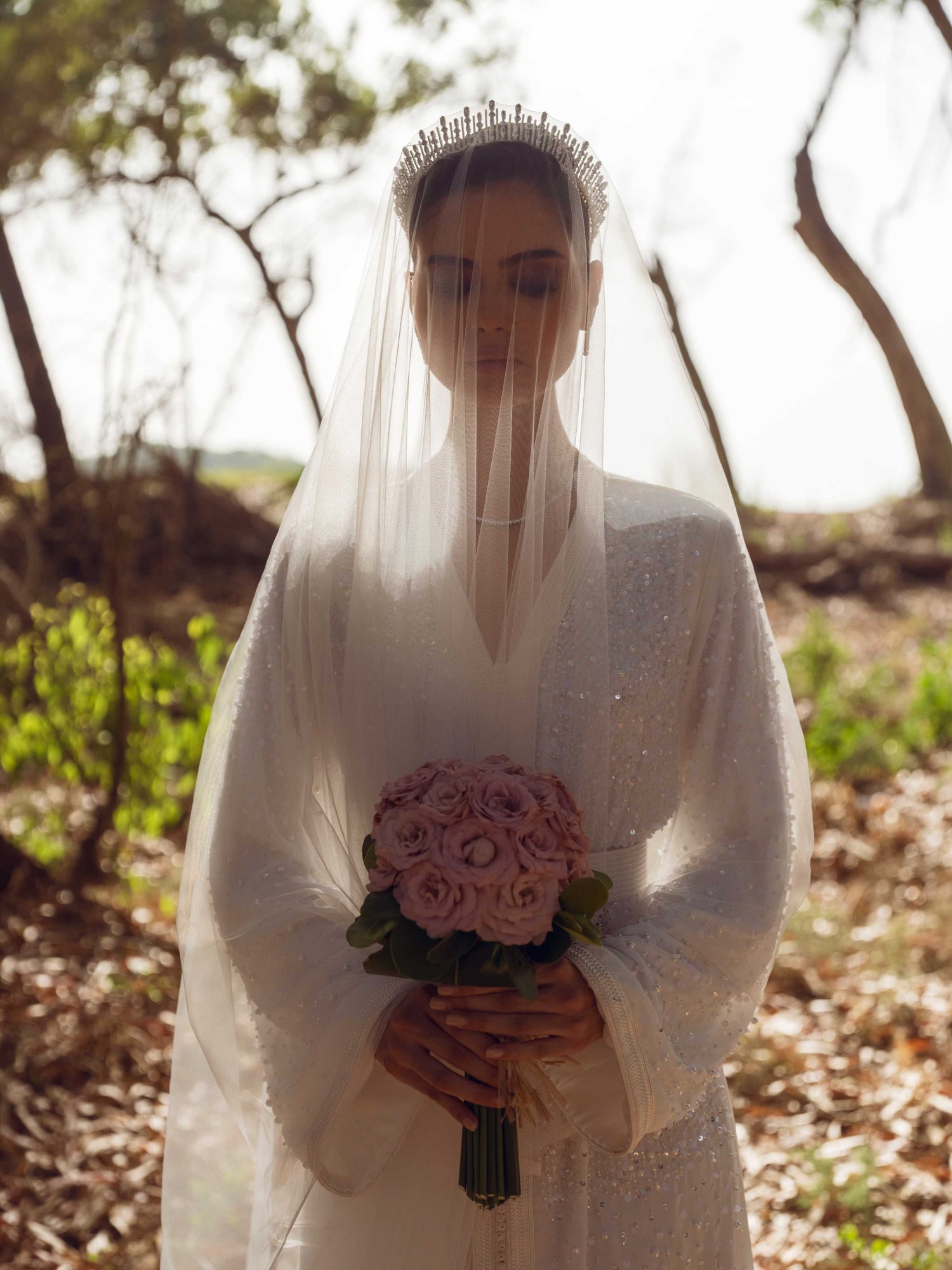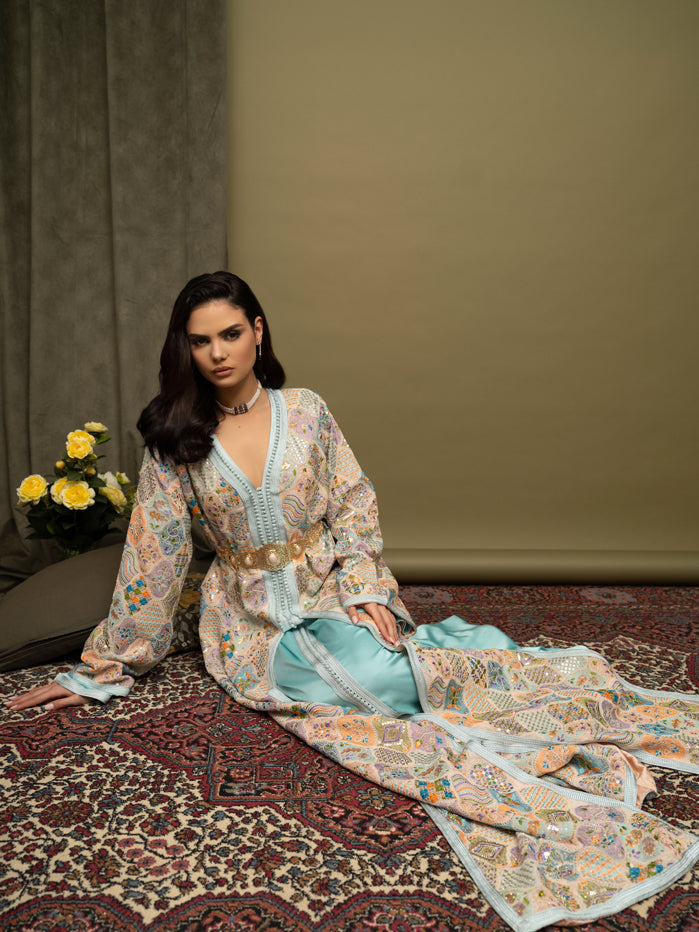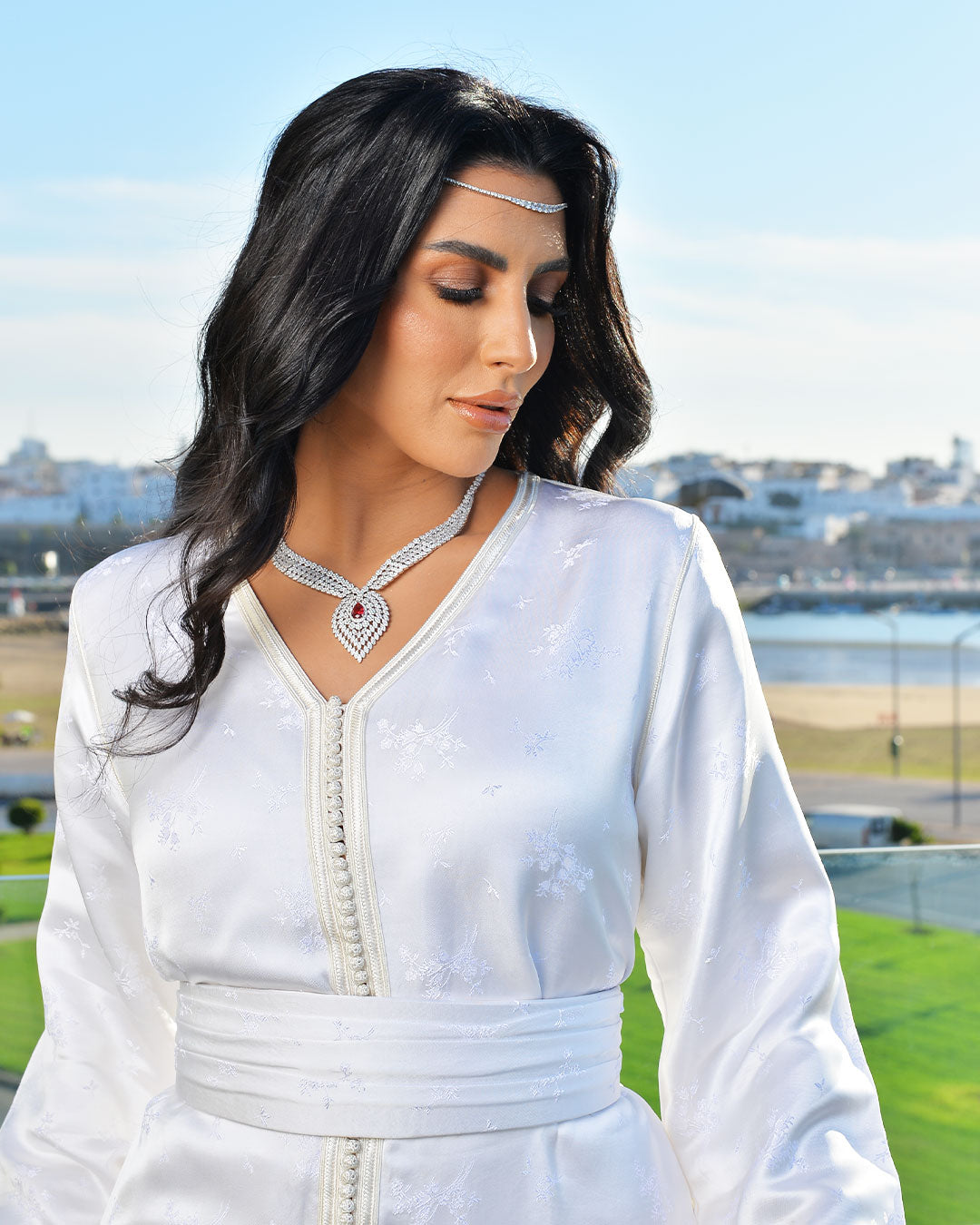
The Fascinating Origins of the Kaftan: A Timeless Garment Through Cultures and Centuries
The kaftan, a flowing garment synonymous with elegance and comfort, has a storied history that spans centuries and continents. From its ancient roots to its modern resurgence, the origin of kaftan lies in a rich tapestry of cultural exchange, royal symbolism, and timeless style. At DAR AL KAFTAN, we celebrate this iconic garment by offering authentic Moroccan kaftans that blend tradition with contemporary flair. Join us as we explore the fascinating journey of the kaftan, uncovering its historical significance, cultural adaptations, and enduring appeal.
Historical Background of the Kaftan
The origin of kaftan traces back to ancient Mesopotamia around 600 BC, where it emerged as a long, loose-fitting robe worn by both men and women. Initially crafted from luxurious materials like silk and wool, kaftans symbolized wealth and power, often adorned with intricate embroidery and precious gems. In ancient Persia, the kaftan, known as a "khaftān," was a mark of nobility, reserved for royalty and the elite. Its practical design—lightweight and breathable—made it ideal for hot climates, while its opulent appearance cemented its status as a garment of prestige. As trade routes like the Silk Road flourished, the kaftan spread across the Middle East, North Africa, and Asia, evolving with each region's cultural and climatic influences.
The Kaftan Across Different Cultures
The kaftan's versatility allowed it to transcend borders, adapting to the unique aesthetics of various cultures. In the Ottoman Empire, sultans wore sumptuous kaftans made of silk brocade, with elaborate designs indicating rank and authority. These garments were so revered that they were gifted to foreign dignitaries, spreading their influence. In Morocco, the kaftan became a feminine staple by the 19th century, characterized by vibrant colors and intricate embroidery, reflecting the country's Hispano-Moorish heritage. In India, the kaftan evolved into the kurta, blending vibrant textiles with local motifs like Bandhani and Aari embroidery. Across West Africa, the boubou, a kaftan-like dress, became a symbol of cultural identity. Each region infused the kaftan with distinct fabrics, patterns, and meanings, making it a global symbol of cultural confluence.
The Evolution of Kaftan Styles Through the Centuries
Over time, the kaftan's silhouette and purpose evolved to reflect changing societal norms and fashion trends. In the 16th-century Ottoman Empire, kaftans were floor-length and richly decorated, often layered with transparent tunics like the Moroccan Mansouria. By the 19th century in Morocco, the kaftan transitioned into a women's garment, with narrower sleeves and fitted designs for bridal and ceremonial wear. The 20th century saw Western designers like Paul Poiret and Yves Saint Laurent embrace the kaftan, introducing it as a liberated alternative to corseted dresses. In the 1960s, the bohemian movement popularized kaftans in bold prints, championed by icons like Elizabeth Taylor. Today, kaftans range from minimalist beach cover-ups to ornate evening gowns, showcasing their adaptability across eras.
The Kaftan in Modern Fashion
The kaftan's resurgence in modern fashion highlights its timeless appeal. High-end designers like Gucci, Valentino, and Emilio Pucci have reimagined the kaftan for contemporary runways, blending traditional craftsmanship with modern silhouettes. Celebrities like Rihanna and Jennifer Lopez have embraced kaftans for their chic versatility, wearing them everywhere from red carpets to beach getaways. At DAR AL KAFTAN, our collections reflect this fusion of heritage and modernity, crafted with premium fabrics and intricate detailing. The rise of modest fashion and sustainable practices has further boosted the kaftan's popularity, as its loose fit accommodates diverse body types and lifestyles.
Symbolism and Significance of the Kaftan
Beyond its aesthetic appeal, the kaftan carries deep cultural and symbolic weight. In its origin of kaftan in Mesopotamia and Persia, it represented power and social status. In the Ottoman Empire, the kaftan's colors, fabrics, and embellishments denoted rank, with sultans donning gold-threaded robes. In Morocco, the kaftan is a symbol of elegance and femininity, often worn during weddings and religious celebrations to honor tradition. Globally, the kaftan embodies unity in diversity, bridging cultures through its shared heritage. Its flowing silhouette also signifies freedom and comfort, resonating with modern values of inclusiveness and self-expression.
How to Wear and Style a Kaftan
Styling a kaftan is as versatile as the garment itself. For a casual look, pair a lightweight cotton kaftan with sandals and a wide-brimmed hat for a beach-ready ensemble. For evening wear, opt for a silk or sequined kaftan, like those from DAR AL KAFTAN, and accessorize with statement jewelry and heels. Belting a kaftan at the waist creates a structured silhouette, ideal for urban settings. Layering with pants or a fitted top adds a contemporary twist, as seen in Indian kaftan-pant pairings. Whether you're aiming for bohemian chic or sophisticated elegance, the kaftan adapts effortlessly to any occasion.
The Kaftan in Art and Literature
The kaftan's cultural significance extends to art and literature, where it serves as a canvas for storytelling. In 18th-century Moroccan texts, kaftans appeared in marriage contracts, highlighting their role in bridal trousseau. European painters, inspired by Alawite diplomats, depicted kaftans in vibrant portraits, showcasing their opulence. In literature, the kaftan symbolizes exoticism and freedom, as seen in Western travelogues describing Middle Eastern and North African cultures. Modern fashion editorials, like those in Vogue Arabia, continue to celebrate the kaftan's artistry, cementing its place as a muse for creative expression.
Sustainable Fashion: The Kaftan's Role
In an era of fast fashion, the kaftan stands out as a beacon of sustainable fashion. Its loose, timeless design reduces the need for frequent wardrobe updates, as it suits various body types and life stages. Artisans at DAR AL KAFTAN use organic fabrics and traditional techniques, minimizing environmental impact. The kaftan's reliance on natural materials like cotton, silk, and linen, along with eco-friendly dyes, aligns with the growing demand for ethical fashion. By investing in a kaftan, you embrace a garment that honors craftsmanship and sustainability, ensuring its legacy for future generations.
Conclusion: The Enduring Legacy of the Kaftan
The origin of kaftan is a testament to its enduring legacy, weaving together threads of history, culture, and innovation. From its Mesopotamian roots to its modern-day prominence, the kaftan remains a symbol of elegance, versatility, and cultural unity. At DAR AL KAFTAN, we invite you to explore our curated collections and discover the timeless beauty of the kaftan. Whether worn for a special occasion or a night out, the kaftan continues to captivate, proving that true style transcends time and borders. Embrace its legacy and make it a part of your wardrobe today.



